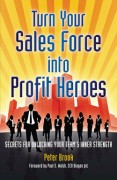Book publishing
Five ways to find a literary agent
29 July 2013 by Admin in Book publishing
Getting published with a successful book publishing company is often considered to be as hard as writing the book in the first place. A lot of publishing companies will no longer accept unsolicited manuscripts. This means that they will not even open your book submission. The main route to acquiring a publishing deal is to secure a literary agent first. A literary agent should act as your mentor, friend and trusted partner looking after every aspect of the commercial and (if you are lucky) emotional business of being an author. That’s the good news; the bad news is that some say now that it is as hard to find an agent as it is a book publisher.
1. Cold Calling
Historically, the most trodden path of finding a literary agent is to contact them directly with a blind submission. A pretty full list of agents can be found in that fine tome The Writers’ and Artists’ Yearbook. If you are not aware of this publication, it is essentially a listing of all registered UK publishers and agents,  including contact information and an idea of what kind of publishing they’re interested in – a very good place to start. Each listing should include specific submission guidelines.
including contact information and an idea of what kind of publishing they’re interested in – a very good place to start. Each listing should include specific submission guidelines.
2. Three degrees of separation
One of the best ways to secure a literary agent is to be introduced by one of their existing clients or through one of their publishing contacts. Unfortunately, this requires that you know a writer or someone at a publishing company. Generally speaking though, most friends and acquaintances are happy to help. Using a social network such as LinkedIn can be helpful in locating a contact within the publishing industry.
3. Make your own luck
Not everyone has friends within the publishing industry but that should not discourage you from making your own. One way of making useful contacts within publishing is to visit a book fair. There are three major book fairs taking place in Europe every year: the Frankfurt Book Fair in Germany, the London Book Fair in the United Kingdom and the Bologna Children’s Book Fair in Italy. The general public are allowed access to each of these fairs, usually for the last couple of days. Introducing yourself politely to publishers you admire and asking them to recommend an agent is a sure fire way to gain valuable introduction.
4. Like-minded souls
Another way to find a like-minded literary agent is to make a list of authors that you respect and find out which agents represent them. Approaching an agent by stating your admiration for one of their authors is a great way to get their attention. By stating that their author has been a great influence on your work will instantly endear you to them and will hopefully open the door to their consideration of your own project.
5. Not the be all and end all
You’ve knocked on their doors; left messages on their voicemails; sent emails, InMails, texts and letters and haven’t heard a thing? Well if you can’t live with them than try to live without them. If you are still adamant about publishing your book with an established publisher it is still possible to secure a deal without having an agent. Although a lot of publishing houses will not accept unsolicited manuscripts, smaller niche houses will often consider a submission without an agent if the book is both clearly in their remit and the author has an established platform.
How to boost your business with a book
18 July 2013 by Admin in Book publishing, Business and finance
The world of print has taken something of a pounding over the last few years. Just look at the newspaper industry and how it’s struggled to cope with the plethora of free news sites. E-book readers – especially Amazon’s Kindle – have changed the publishing landscape beyond recognition. A business model that has worked well for well over a hundred years has all but disintegrated.
We’ve blogged before about the huge changes in the world of publishing and like most publishers, we upload e-book editions of our books on all the major platforms. A digital book is indeed an important way to disseminate knowledge. But we’ve always been of the opinion that a physical printed book creates the most impact.
We’ve worked with established and new authors alike, bringing their books to market around the world, and over the years we’ve published a lot of books with business consultants. Our view has always been that a printed book offers a great way to promote a consulting business.
 So to test our theory we thought we’d do some research. We emailed some ten thousand consultants in the UK, identifying published authors and asking them if having a book had had a positive effect on their businesses. The answers we received made very interesting reading. They can be summarised thus:
So to test our theory we thought we’d do some research. We emailed some ten thousand consultants in the UK, identifying published authors and asking them if having a book had had a positive effect on their businesses. The answers we received made very interesting reading. They can be summarised thus:
- Nearly 75% of respondents told us that they had written their book in order to promote their business;
- 72% of respondents claimed that as a result of being published recognition of their business’ brand increased;
- Nearly 60% claimed that they picked up more speaking events after being published;
- 65% stated that being published gained them more clients.
That’s quite compelling, and it supports some of our own anecdotal evidence (one of our authors gained a six figure consulting role as a result of his book being bought at an airport bookshop, another ended up as a speaker at the World Economic Forum at Davos two years in succession).
A well published physical book is the best calling card a consultant can have. Books have a high perceived value and rarely get thrown away, so once they’ve been purchased by a reader, they tend to stay with the reader. A physical book without doubt establishes a consultant’s authority and can have a very positive effect on a business.
If you’d like more information, either on the survey results or getting into print with Infinite Ideas, do get in touch.
The Golden Acorn recommended in National Literacy Trust book list
16 July 2013 by Admin in Book publishing
As part of its work towards improving reading skills among young learners in the UK, The National Literacy Trust recently announced its official list for ‘Books that work well in shared and guided reading’, a valuable resource based on a 2013 survey of a network of over 33,000 teachers.
High on the list for key stage 2 is Harry Potter and the Philosopher’s Stone – no shock there then. And selected for key stage 3 are Roald Dahl’s classic Boy, commended as a basis for autobiographical writing exercises, and Mark Haddon’s bestselling crossover book The Curious Incident of the Dog in the Night-Time, for its ability to raise questions and promote discussion.
But there are a few surprises too. Among the list of titles recommended for key stage 2 is Catherine Cooper’s The Golden Acorn, notable for being structured in such a way that it fits well into a reading session and commended as ‘exciting enough to hold children’s attention between sessions’. Originally self-published, The Golden Acorn won the Brit Writers’ Awards 2010 for unpublished writers, securing its author a five-book publishing deal with Infinite Ideas.
Catherine was a primary school teacher for twenty-nine years before deciding to write for children, so perhaps we shouldn’t be surprised that her books are so popular in schools. Catherine visits about fifty schools a year to talk to children about her stories, and travels all over the country presenting prizes, opening libraries, signing books, giving speeches and attending festivals. She is a keen supporter of an innovative reading scheme run by KidsReadWriteReview, and has received invitations to both houses of parliament for her work with Beanstalk, a charity that supports the network of volunteers who help children with their reading.
The November release of Catherine’s fifth Jack Brenin book, The Oak Lord, will be supported by the usual flurry of author activity – what would a book launch be without an exhausting treadmill of author engagements, signings and events, not to mention the work that happens behind the scenes, on emails, social media and press activity? For Catherine these activities are a year-round commitment, and something she thrives on. ‘Of course’, says Catherine, ‘Camelin always accompanies me: he has various hats, and both black and white bow ties to wear, depending on the occasion’.
Raven-boy and best friend to Jack Brenin, Camelin is perhaps the best loved of all Catherine’s characters. He takes pride of place on Catherine’s website and even has his own Facebook page, where users can access his daily posts, and find out how to enter his monthly portrait competition. ‘We’ve had photos of a Camelin soft toy, made by an 11 year old boy… a button picture of Camelin, and every media imaginable, including this month a drawing done on an iPad,’ reveals Catherine.
As schools across the UK continue to make the shift into the digital world, it’s now even easier for teachers to access the resources they need, and for children to discover more about the things they enjoy. A children’s book can no longer be just a book and survive in today’s overcrowded market. Just as a DVD comes packed with extra content, a book must be a portal to a world of discovery. It must work on many levels if it is to be successful in a school where attention spans may be low and reluctance towards reading is high. It should be a source of entertainment but also a learning tool. And it must take advantage of the latest digital technology if it is to realise its full potential.
Knowing this, Catherine works tirelessly to create a love of reading in children, and also to encourage kids to write. There is strong evidence that gifted books are more likely to be read, and that’s why Infinite Ideas offers The Golden Acorn as a free download in the UK Kindle Store. It’s also free for a limited period on the Nook Store, along with the illustrated accompaniment The Book of Dragon Lore. ‘Our free eBook is enormously helpful in encouraging children who want to read’, says Catherine. ‘I believe reading is the passport that enables children to travel on a never-ending journey for the rest of their lives. The places you can visit are limitless – how else could you journey to the stars; experience a foreign land or be transported in time and place? When you open a book, no matter what its genre, you can only release the magic from its pages when you’re able to read.’
With The Oak Lord publishing this November, we’re very pleased to say that the fun isn’t over yet.
How a published book can help promote a consultancy
10 July 2013 by Infinite Ideas in Book publishing
by Peter Brook, author of Turn your sales force into profit heroes.
They say everyone has at least one book in them and until recent years I had a long-held ambition to become a published author. After years in the FMCG industry, I’d gained a huge amount of insight into why some product launches worked, but why many failed. I’d worked with top brands and what I learnt was this – invariably, exceptional performance comes from having sales people who execute the basics brilliantly and, more importantly, are passionate about what they’re doing.
Determined to get my insights into print, I met with the Infinite Ideas team and was impressed by what they told me and their plans to market the book and my consulting business. All I had to do was write the damn thing. So I set aside some time, locking myself away in rural Norfolk to concentrate on my magnum opus. I quickly realised that I needed some support and I received that in the shape of a very supportive co-writer. He helped me structure the book properly (it was far harder than I thought to get my knowledge down on the page) and the net result was a powerful manuscript that I delightedly handed over to my publishers after some six months of writing.
It was an exciting period, seeing the book become real. Infinite Ideas gave a full input into the book’s overall design and in March 09 my book was launched.
Now, it’s a tough market out there as every publisher will tell you. Bookshops are not as supportive of new authors as they used to be, but it was a fantastic buzz to walk into bigger stores and see my book on the shelf. But having a book published is not just about book stores these days. It’s about media coverage and Infinite Ideas secured me interviews and articles in the trade press. A professionally published book gets you noticed and gives you a degree of authority – in effect it can turn you very quickly into an industry expert.
 But guess what? As a result of someone buying my book at Heathrow airport I picked up a substantial piece of consulting business within a month of publication. The book has been successful around the world; some big FMCG companies have bought multiple copies for their sales teams, all of which helps to get my consulting services known globally.
But guess what? As a result of someone buying my book at Heathrow airport I picked up a substantial piece of consulting business within a month of publication. The book has been successful around the world; some big FMCG companies have bought multiple copies for their sales teams, all of which helps to get my consulting services known globally.
Sure, it’s available as an e-book too on consumer and B2B platforms and that’s given me valuable exposure, but I am convinced that a physical printed book (even in this digitally thirsty world) is vitally important. Books are valued, they rarely get thrown away and my book sitting in my clients’ offices means my profile remains high.
 Publishing Turn your sales force into profit heroes really helped launch my consulting business and promote me as an industry expert, an authority. I’d heartily recommend that if you are passionate about what you do, you consider the value of becoming a published author.
Publishing Turn your sales force into profit heroes really helped launch my consulting business and promote me as an industry expert, an authority. I’d heartily recommend that if you are passionate about what you do, you consider the value of becoming a published author.
Preparing a manuscript for submission
8 July 2013 by Admin in Book publishing
‘If a publisher declines your manuscript, remember it is merely the decision of one fallible human being, and try another.’
Sir Stanley Unwin, co-founder of publishing house George Allen and Unwin
You’ve got to the point where a publisher has agreed to take a look at your manuscript. Congratulations! You have joined the elite group of writers who actually get read by someone. But it’s very easy to mess this stage up. What follows is a publisher’s view of the dos and don’ts.
DO please re-read your manuscript. The publisher will be reading it completely cold and will notice all sorts of off-putting blemishes. She’ll be looking for reasons to put your manuscript away (i.e. reject it) and get on with the other twenty she has to read that morning. Don’t give her the ammunition. You need to read it in the same way that she will. Practically all writers read their own work, but only a few actually see their own work. The least you can do is make sure your work is spelt correctly.
 DON’T fall into the trap of being too easily satisfied with your work. Of course you’re proud of it but don’t let euphoria lead you to a false sense of security. Find a reader you can really trust, somebody not too close to you, but close enough to understand what you are trying to do.
DON’T fall into the trap of being too easily satisfied with your work. Of course you’re proud of it but don’t let euphoria lead you to a false sense of security. Find a reader you can really trust, somebody not too close to you, but close enough to understand what you are trying to do.
DO make sure the presentation is slick. Infinite Ideas gets anywhere between twenty and fifty submissions a week from all sorts of wannabe authors. Many of these are beautifully submitted, but they’ve had entire manuscripts submitted unbound and falling all over the place (without the page numbers needed to stack them back in order); cookbooks sent on scrap paper and, once, even on toilet roll (not used). They receive submissions that are (badly) handwritten, complete with ink stains and margin notes, or so badly laid out on the page that nobody could have any idea what’s going on. These submissions may be masterpieces but no publisher or editor will devote time to deciphering a poorly presented manuscript. They all get rejected instantly.
DON’T be tempted to experiment with clever presentation tricks in order to woo an editor. The idea of submitting your cookbook on greaseproof paper might seem brilliant at first, but it isn’t. The type will still be rubbing off the paper when it hits the bin.
DO avoid annoying a publisher before she has even started reading by following some simple style tips. Use good quality A4 paper if you are submitting as hard copy: it should be clean, white and fairly heavy if it’s to survive being thumbed. Leave a large margin on the left hand side (for editorial notes) and space on the other margins: it makes a page much easier and more pleasant to read. Only ever print on one side of the paper (you’ll have to forget the trees for once). Keep your text clean and well spaced: stick to a size 12 font (black) and always set in double-spacing. Indent the first line of every new paragraph, don’t leave extra lines between paragraphs, and always make sure your pages are numbered.
DON’T be anonymous. Make sure the publisher can see it’s your work. Include your name, address, telephone number, email address and date in the top right-hand corner of the title page. Write the title of the piece in the middle of the page, and, at the bottom, write the number of pages submitted and the number of words.
DON’T fold your manuscript over when sending, or stuff it into a tiny envelope. If even you don’t seem as though you’re proud of it or care about it why should the publisher care?
DO always include a brief covering letter with your manuscript (and at all costs avoid trying to explain or justify your work – credit publishers with the imagination to work that out by themselves) and a stamped addressed envelope. If a publisher sends the manuscript back and it’s a little dog-eared or coffee stained, don’t send it out to the next one: print off a new copy. And for God’s sake remember to remove any rejection slips a previous publisher has attached before sending it on (it happens more than you’d think).
DON’T just send your work to the first publisher you come across or the only publisher you know. Do some research, find out which imprint is most likely to publish your style or genre – a romance publisher won’t accept your horror novel even if it’s the best thing they’ve ever read. Get hold of a publisher’s catalogue to see what kind of books they publish. Alternatively buy a yearbook that provides information on what each publisher accepts and the guidelines for approaching them.
DON’T send in your entire manuscript. Nothing’s more likely to get your work sent back unread than an unsolicited novel plopping onto the welcome mat. Instead, write a brief letter to a publisher telling him who you are, and including any information about your past successes and your future plans (publishers like to invest in writers who plan a career in writing). With this letter, include a three-hundred-word synopsis of your work and two sample chapters (usually the first two). And never send a proposal to more than one publisher at a time: it’s considered very bad form (the publishing world is a very small one).
DO accept rejection. Unless you are extremely lucky you’ll have to. It isn’t easy: during the abyss of time between submitting a piece of work and hearing an editor’s response you can’t help but build up your expectations. And if the response is negative it can crush your confidence. Don’t give up.
DO take notes. Rejection can take many forms. More often than not you’ll get a printed compliment slip with nothing written on it. This is the easiest response for an editor but the most frustrating response for a writer. What did they think? Wasn’t it even worth an acknowledgement? Don’t get too wound up. Editors are busy and sometimes they simply don’t have the time (or are too badly organised!) to respond. Sometimes the printed slip comes back with some scribbled comments. These might be complimentary: ‘good but not quite right for this imprint’; promising: ‘please send something else’; critical: ‘good overall but you haven’t quite pinned down the characters’; or just plain derogatory. We won’t give an example of the last, but they do occasionally happen. If you do get a grumpy response, just try to ignore it (the editor’s probably got haemorrhoids from sitting down all day) and move on.
DON’T automatically reject your rejection. If an editor sees real promise in your work he may take the time to write a more detailed analysis of his decision. Don’t take this as an insult and bin the comments, or get on your high horse and write a scathing letter back justifying your work. It’s an editor’s way of encouraging you to look at certain elements of your writing in order to improve your chances of publication. Take a few days to cool down, then look at what he’s saying: it may not be relevant, but he might just be pointing out a weakness you’ve completely overlooked. Editors don’t often make good writers, but they do know what sells and what doesn’t. Paying attention to their comments will give you a great advantage next time you submit.
DON’T ever, please, address your work to Dear Sir/Madam. If you can’t be bothered to find out the relevant publisher’s name why should he be bothered to read it?
A short word about failure
What do Catch-22, Harry Potter and the Philosopher’s Stone, The Time Machine, Sons and Lovers, Moby Dick, The Lord of the Flies, Northanger Abbey, Tess of the D’Urbervilles and Animal Farm have in common? They were all rejected by publishers, often many times. Some famous writers have literally been able to paper their walls with rejection slips. The moral? Never give up, keep trying: every good book will find a home eventually.
Randy Penguin: Survival in the age of the literary sausage machine
2 July 2013 by Admin in Book publishing
So, the biggest publisher in the world has formed by the merger of Random House and Penguin, thus creating Penguin Random House (or Randy Penguin as some have dubbed it).
The figures are staggering – this new company employs more than 10,000 people and publishes more than 15,000 new titles every year across 250 imprints. It will control some 25% of the entire trade market in the USA and 27% of the UK market (Monopolies Commission? What Monopolies Commission?). Sales for the group will be some £2.6bn. That is some industrial-scale literary sausage machine.
So why create it? Thomas Rabe, chairman and chief executive of Bertelsmann (owners of Random House), said: ‘Together, we can and will invest on a much larger scale than separately in diverse content, author development and support, the publishing talent, the entire spectrum of physical and digital book acquisitions, production, marketing, and distribution, and also in fast-growing markets of the future.’
So it’s pretty much a deal to drive costs down in order to be more competitive. In the last ten or so years, the big trade houses have been scratching their tender parts wondering how to cope as the world they knew imploded. High Street bookstores in the UK (Borders, Dillons, Ottakar’s, for example) have disappeared leaving just Waterstones and WH Smith (independent bookstores have  shrunk by about a third in that period). Supermarkets have become increasingly important, concentrating on deep discounting of bestsellers (again squeezing margin often offering books as loss leaders).
shrunk by about a third in that period). Supermarkets have become increasingly important, concentrating on deep discounting of bestsellers (again squeezing margin often offering books as loss leaders).
But really what they’re frightened of are the ‘A’ words – Amazon and to a lesser extent Apple. Amazon’s global turnover in 2013 is anticipated to be $3.6bn, and their ownership of the most popular e-book market through the Kindle platform, their own publishing and self-publishing programmes means their dominance in the book world can only grow. And that’s what this merger is about – to create an entity to try to compete with the growth and ambition of our Seattle-based friends.
So, where does this leave independent publishers and authors? Well, it’s a tough market and it will probably get tougher. The independent publishers need to be fleet of foot and exceptionally creative (something that conglomerates are not traditionally strong at) and publish innovative books which are marketed in non-traditional ways. We believe that there can be a thriving independent sector once it is accepted that the old routes to market barely exist.
We do however fear for authors. Under the Penguin Random House umbrella, it’s safe to assume that the big names in all sectors will increase their earning power with all that sales and marketing muscle. New and mid-list authors will struggle to find businesses willing to take a risk and invest in the sometimes long process of breaking in new talent. There’s always the self-publishing route which has worked spectacularly for certain authors.
But we’re an optimistic lot at Infinite Ideas. We think that even in this world of massive organisations where the Financial Director is more important than the Editorial Director, good writing will find a way.
